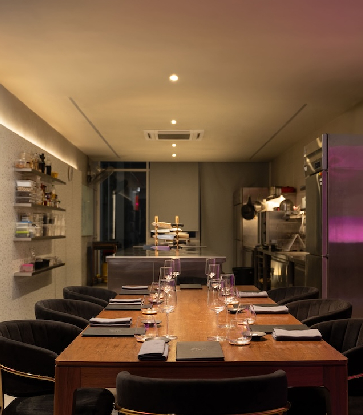In the exciting world of Vietnamese food, the F&B industry is on the rise, set to grow by 6 percent by 2025, according to Vietnam Economy Times.
Earning its stripes as a culinary heavyweight in Southeast Asia, Vietnam has increasingly drawn the taste buds of both local food enthusiasts and international epicureans. However, the pandemic events of 2020 have sparked a new appetite among consumers for eco-conscious fare, propelling Vietnamese establishments to embrace green practices despite the hurdles.
Today, diners aren't just eating; they're making a statement, showing they're willing to pay 5 percent more for organic options in Vietnam's restaurants.
But what if you want to make a statement without breaking the bank dining out at fancy restaurants? Chef Quang Dung of Chapter, a 2023 MICHELIN-listed contemporary Vietnamese restaurant, and Habakuk, a cafe turned cozy diner and a Bib Gourmand recipient establishment in Hanoi, share his views on Vietnam’s sustainability landscape, as well as how you can be a sustainable hero at home.

Sustainability in the F&B industry in Vietnam
“When talking about sustainability in the food industry in the past, Vietnamese people primarily focused on vegan and vegetarian diets. So, the sustainability movement progressed slowly [in Vietnam] because the number of vegans/vegetarians was small compared to the whole population. But since the arrival of the MICHELIN Guide in 2023, we have seen the rise of fine dining restaurant openings; restaurateurs, chefs, and diners have become more serious about what’s behind their food,” said Dung. “I see a number of changes in the way many restaurants choose local ingredients, reduce food waste, and carbon footprints, or support local farms.”According to Chef Dung, the term “sustainability” is relatively new in Vietnam’s hospitality industry. “But it’s becoming a global standard, and I firmly believe that Vietnam’s hospitality will catch up in the near future.”
At Chapter and Habakuk, his restaurants, no ingredient goes to waste. Take, for instance, the trimmings and leaves of gong cai, a foraged vegetable from Vietnam's northern mountains. These are infused into his ice cream mix, creating a subtly pandan-flavoured treat to adorn his Vietnamese mochi. Meanwhile, the vegetable's crisp core finds its place in his raw fish salad, adding a delightful crunch to the dish.
Any trimmings not incorporated into dishes or used for stocks are sent, along with minimal guest leftovers, to Chapter’s Terrasol organic farm in My Duc, Hanoi. There, they are fermented and repurposed as compost.
“Sustainability is furthered by our farm-to-table ethos, with the farm located only 20 kilometres from the restaurant. Additionally, we pledge that 80 percent of our ingredients are strictly seasonal and sourced from Northern Vietnam,” says the chef.

Not only does Chef Dung prioritise locally sourced produce, but he obviously takes a step further in his cooking techniques. "We focus more on preservation and primitive cooking rather than modernist or molecular methods, so you'll see fermentation, pickling, curing, and smoking taking centre stage. By making our own kombucha, vinegar, rice wine, chilli sauce, etc., we also help reduce food and plastic waste at the same time."
So, how can diners take away his pro techniques and apply them at home? Here are his tips.
Plan ahead and prep your meals
- Planning before cooking is crucial. It takes only 10-15 minutes, yet it can save tons of resources. Despite this, many cooks overlook the importance of planning. Dung suggests spending 1 hour every Saturday or Sunday planning your meals for the whole week.
- Determine the amount of ingredients you need to buy, which will save you time and gasoline.
- Only buy what you plan for, and then try prepping and portioning your meals for the whole week while the ingredients are fresh.
- Keep each of your "mise en place" (a term for your prepped ingredients) in an airtight box (preferably not plastic) and store them in the fridge or freezer, depending on the ingredients.
Buy from local sources
- Supporting local vendors and producers ensures that you are buying products that are in season and at their best.
- Build a relationship with your suppliers; you'll be amazed at how much you learn and how good seasonal ingredients can be. Not to mention, it reduces carbon footprint!
Eat more local vegetables
- Not ready to go fully vegan or vegetarian? Chef Dung recommends trying a good proportion of plant-based items that are beneficial for both your health and the environment, just like he does.
- Make sure your greens are in season and locally produced.
Grow our own vegetables
- Give hydroponic vertical farming a shot—it's an easier and more consistent method. Sure, you'll encounter some trial and error, but once you get the hang of it, the chef says it can be the most rewarding feeling, whether you're a novice or a pro.
“I was shocked to discover how many vegetables my friend produced for her family and everyone she knows just from a well-organised rooftop garden. So, I decided to learn it myself, too.”
Illustration image: © Chapter















